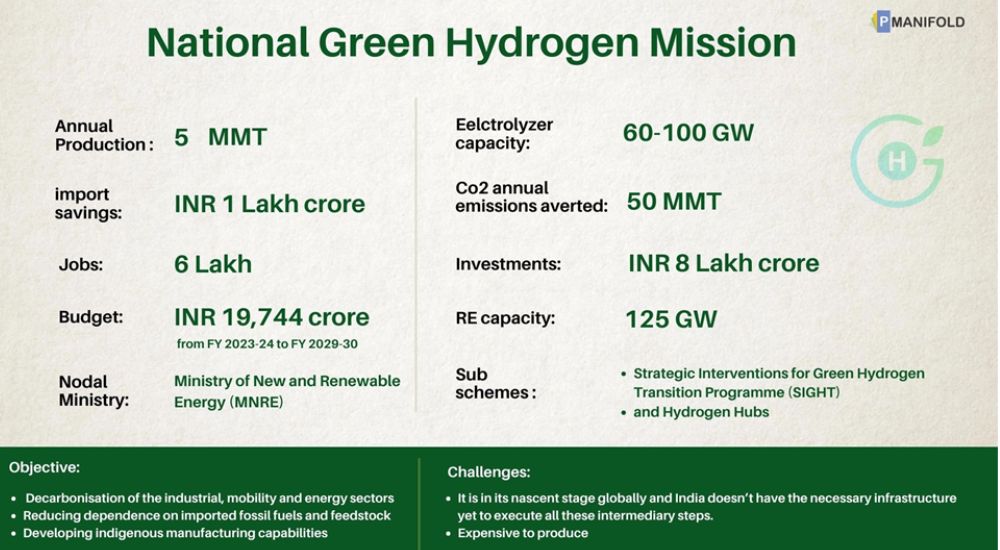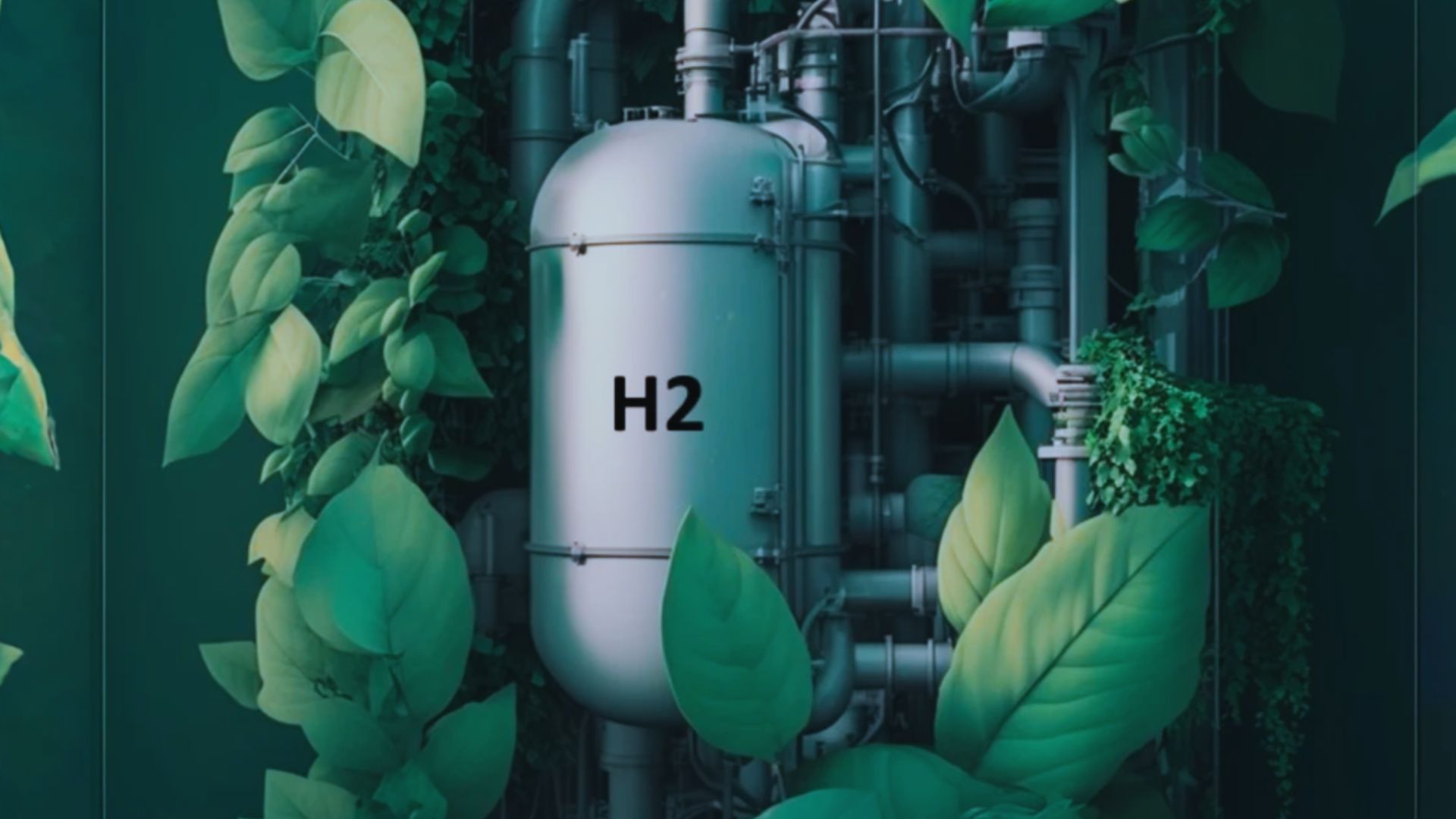Green hydrogen is no longer a futuristic concept; it is gradually and certainly materialising into reality. This transition holds the potential to steer a global shift towards renewable energy. For many, green hydrogen is now seen as a technology capable of propelling countries and companies towards their net-zero goals.
Today, as we stand at the threshold, it is the perfect moment to tap into hydrogen’s potential. India, recognising the immense promise of this green fuel, has taken steps to promote its productionon a commercial scale.
The Government of India (GOI) announced its first step under the SIGHT program to catalyse domestic productionthroughdevelopments in the National Hydrogen Mission.
Bhupinder Singh Bhalla, Secretary of the Ministry of New and Renewable Energy, shared that the Ministry is making strides in advancing the National Green Hydrogen Mission. He mentioned that MNRE is planning to issue the first tranche of the green hydrogen incentive scheme in the next few months and the second tranche later this year (2023). He revealed that a pre-bid meeting has already taken place, and clarifications will soon follow. The government aims to finalize this initial tranche of the incentive scheme within the mentioned timeline. He emphasized that tranche-II of the scheme is also in the pipeline and is expected to be announced later this year. Bhalla disclosed this information during his address at the fourth international conference on clean energy, organized by the Confederation of Indian Industry.
“Though the demand for hydrogen is at an all-time high, its production encounters substantial hurdles”.
Currently, there are a limited number of global original equipment manufacturers (OEMs) for electrolysers, equipped with advanced technologies and extensive production capabilities, resulting in a massive demand-supply disparity. Particularly in India, this gap is even more noticeable, given the scarcity of fully operational manufacturing units and suppliers until last year.
“The current absence of domestic manufacturers presents a challenge to India’s green hydrogen objectives. Nonetheless, in recent months, Indian electrolyser manufacturing capacity has shown a notable increase to meet the rising demand for green hydrogen.”
According to analysis by Norwegian research firm Rystad Energy, India is on the verge of becoming a key global hub for electrolyser manufacturing, with approximately 8GW of manufacturing facilities expected to commence operations by 2025.
The cumulative capacity of 8GW comprises nine companies engaged in seven factory projects. These projects consist of three joint ventures and three independent investments. Among them, the most significant contributions are from the 2GW factories established through collaboration between Belgium’s John Cockerill and India’s Greenko, as well as Nevada-based Ohmium.
In the recent months, several Indian companies have announced green hydrogen plans including –
- Reliance Industries: announced to commit $75 billion to green energy.
- Ohmium: Secured $45m in private funding for the expansion of its existing 500 MW plant in Bengaluru
- Greenko Group and John Cockerill: to build 2-gigawatt hydrogen electrolyser Gigafactory in India.
- Indian Oil corporation: teamed up with two private companies to launch a joint venture to develop green hydrogen.
- Adani group: announced to invest $70 billion by 2030 into renewable energy infrastructure, including green hydrogen.
- Larsen and Turbo in partnership with Hydrogen Pro (Norwegian electrolyser manufacturer) and H2e Power (Indian fuel-cell manufacturer): plans to make solid-oxide electrolysers at its Gigafactory.
- H2e Power: Also plans a 200MW factory to make anion exchange membrane (AEM) electrolysers.
- GreenH electrolysis: To set up an electrolyser manufacturing plant with a 1 GW capacity in India. GreenH is a joint venture company between Spain-based H2B2 electrolysis technologies and GR group, India.
Additionally, Reliance Industries and Adani Group have pledged to make the world’s cheapest green hydrogen at $1 per kilogram[1].
Electrolyser manufacturing capacity in India in Gigawatt (GW)

(infographic: India’s emerging electrolyser manufacturing ecosystem)
The National Green Hydrogen Mission
The Green Hydrogen Mission, launched on August 15, 2021, aspires to position India as a net exporter of green hydrogen. The goal of producing 5 MMT of green hydrogen per year by 2030 is ambitious yet achievable. This endeavour goes hand in hand with a significant push for renewable energy, targeting an associated capacity addition of about 125 GW in the country. India’s commitment to these goals illustrates its dedication to a sustainable, eco-friendly future.
Under this program, there are two umbrella sub-missions aiming to facilitate demand creation, production, utilisation, and export of green hydrogen. The first is the Strategic Interventions for Green Hydrogen Transition Program (SIGHT), which aims to fund the domestic manufacturing of electrolysers and the production of green hydrogen. The second is to support pilot projects in emerging end-use sectors and production pathways.

What is an electrolyser and why are they essential?
An electrolyser is a device that harnesses a chemical process called electrolysis. By utilizing electricity, it can effectively split the molecules of water—comprising hydrogen and oxygen—without emitting carbon dioxide into the atmosphere and water as its only by-product. This sustainable production of hydrogen lays a strong foundation for a decarbonized economy.
Currently, there are different types of electrolysers depending on their size and function. The most used types are alkaline and PEM.
Hydrogen electrolyzers offer heightened efficiency in converting electrical energy to hydrogen, making them environmentally friendly and dependable sources of energy. They prioritize safety in usage. Industries like transportation, oil and gas, manufacturing, steel, and chemicals benefit from their versatile applications, enabling cleaner processes and sustainable outcomes.
Electrolysers are an essential component in the green hydrogen production chain, accounting for a significant portion (30-40%) of the levelized costs of hydrogen (LCOH). The localisation of electrolyser manufacturing is a key strategy for India to expedite the development of its green hydrogen ecosystem.
India stands at an advantageous position with a large coastline with access to seawater and abundant sunlight for solar power, wind resources, and strategic geographic location, ideal to produce green hydrogen.Green hydrogen tech is gaining prominence in areas where direct electrification is not feasible. Heavy-duty transportation, long-range transit, specific industrial sectors, and long-term power storage emerge as prime domains for the application of green hydrogen technologies. Leveraging this nascent stage of the industry, India has an opportunity to establish regional hubs, facilitating the export of high-value green products and engineering, procurement, and construction services. This strategic move shall not only promise a sustainable future for India but also pave way for it to play a leading role in the global green hydrogen landscape.


